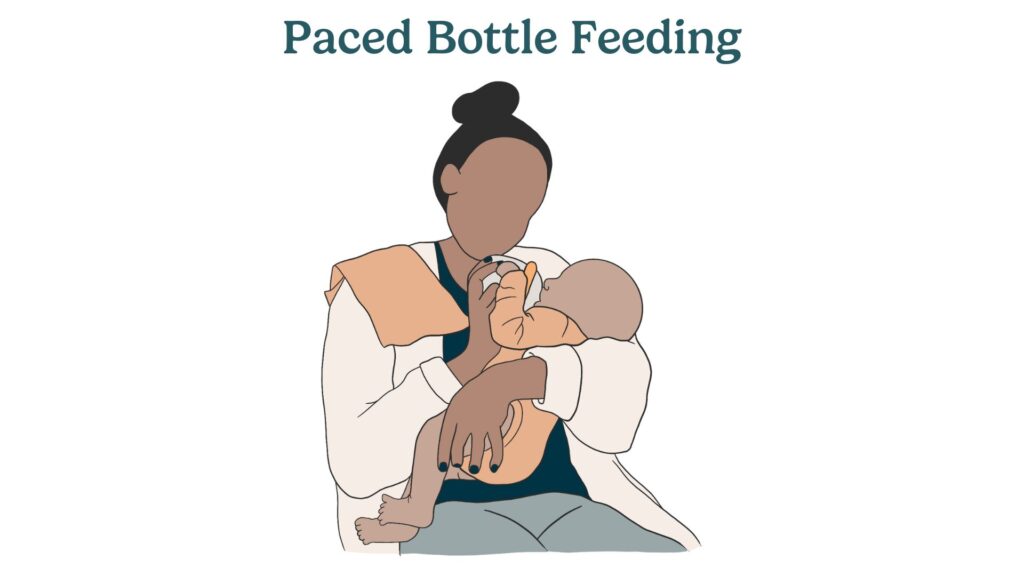paced bottle feeding

Paced bottle feeding
Paced bottle feeding is a technique designed to mimic the natural rhythm of breastfeeding. It allows the baby to control the flow of milk, allowing the baby to drink at a slower pace and reducing the risk of overfeeding.
What to watch out for
It’s important to understand the principles of paced bottle feeding and how to manage it effectively. Here are some key points and tips:
- Upright position: Hold your baby in an upright, semi-reclined position to help them control the flow of milk and reduce the risk of choking.
- Horizontal bottle: Hold the bottle horizontally so the milk flows slowly. This allows your baby to take breaks and control their intake.
- Frequent pauses: Encourage your baby to take regular pauses by tilting the bottle down or removing it briefly, giving them time to swallow and breathe.
- Watch for cues: Pay attention to your baby’s hunger and fullness cues, such as sucking eagerly when hungry and turning away or slowing down when full.
Tips for managing paced bottle feeding
- Use a slow-flow nipple: A slow-flow nipple helps regulate the milk flow, making it easier for your baby to manage. Recommended brands include Lansinoh, Motif, Joovy, Dr. Brown’s Original Narrow, and Evenflo Balance Standard.
- Burp frequently: Pause to burp your baby regularly during feeding to release any trapped air and reduce discomfort.
- Stay responsive: Be attentive to your baby’s cues and adjust the pace of feeding accordingly. Allow them to take the lead in determining the feeding rhythm.
- Maintain eye contact: Engage with your baby during feeding to create a bonding experience and help you read their cues better.
Physical limitations or health circumstances
Certain conditions can influence the need for paced bottle feeding:
- Overactive let-down: If you have an overactive let-down reflex while breastfeeding, paced bottle feeding can help your baby manage the milk flow better.
- Reflux: Babies with gastroesophageal reflux (GER) can benefit from paced feeding, as it helps prevent overfeeding and reduces spit-up.
- Premature babies: Preemies may have underdeveloped sucking and swallowing reflexes, making paced feeding beneficial for controlling milk flow.
Other terms
Understanding related terms can help you better manage paced bottle feeding and related feeding practices:
- Let-down reflex: The release of milk from the breast triggered by your baby’s sucking. Learn more about let-down
- Reflux: A condition where stomach contents flow back into the esophagus, causing discomfort and spit-up.
- Slow-flow nipple: A bottle nipple designed to release milk slowly, helping to control the flow and pace of feeding.
- Feeding cues: Signs that your baby is hungry or full, such as rooting, sucking on hands, or turning away from the bottle.
- Lactation consultant: A professional who can provide support and guidance on breastfeeding and bottle-feeding techniques.


